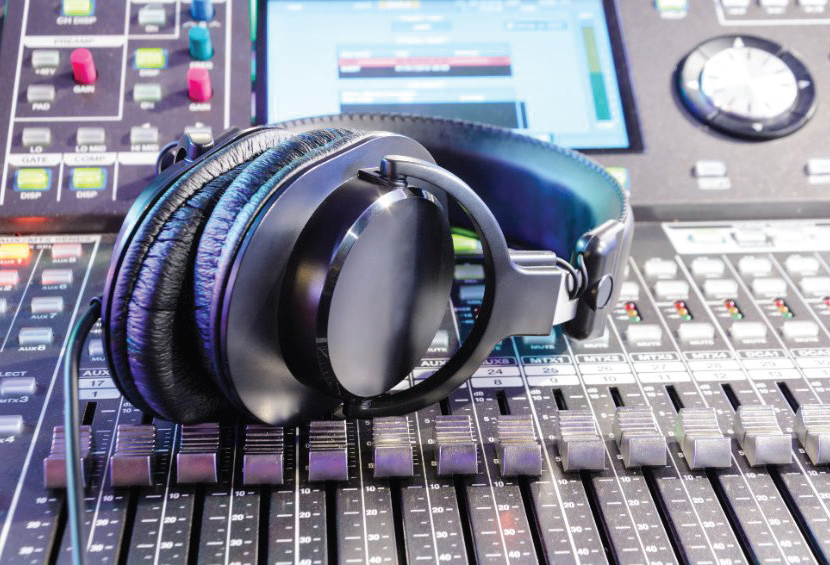One of the top streaming questions that rears its head across forums and panel discussions is how our mix translates while we’re streaming and the best ways we can monitor those mixes.
Separation
For those of us that are mixing the stream and front of house from the same location, we know the pain of trying to really listen to the stream mix without letting the main room or sanctuary bleed into our headphones. Alas, nary a headphone can truly keep every single thing out.
So, if you’re reading this right now and your setup resembles the aforementioned, please feel free to skip right over to the “Post-Mortem” section later in this article.
If you’re lucky enough to have a separate individual that can monitor the stream audio live, great! We’ll need to make sure that we create some physical distance between the person doing the monitoring and the main room or sanctuary. A volunteer with an iPad controlling one of the auxes on the console with some earbuds and a wireless in-ear pack absolutely counts towards this.
One of the most-clever setups I’ve used is just what I described. I needed wireless capability and separation. At the time, I bought an affordable wireless in-ear monitoring system from Shure and plugged it into the headphone jack on my console.
This lets me walk away from the console with my iPad but still be able to use the solo/monitor/PAFL bus to listen to anything I want (in this example, I’m listening to the streaming aux or mix.) I can walk anywhere around the church within reason (lest we forget the limitations of wireless and WiFi) to find that physical separation between the source of the stream and the stream monitoring.
Physically moving away from the main room or sanctuary gives us the sonic separation that’s so necessary. Now we can listen, concentrate, discern, and mix all at the same time. I’ve even had my laptop and/or my phone playing the stream next to me while I find a comfortable chair to sit in and mix.
Mediums
There are several ways we can look at mediums, but I’d like to focus beyond just platform mediums and dive into listening mediums.
Think about all the ways that congregants and parishioners consume the stream – how many can you list? iPhones, Android phones, many different tablets, various TVs, computers, car stereos, headphones, home entertainment systems…
We can’t possibly account for all of them, but we can do a lot better than a single pair of headphones. Often, listening and cycling through these different listening mediums will also happen in a post-mortem. But if we’re critically listening while we’re also making adjustments, it means the turnaround time for changes is significantly shorter.
Unfortunately (or perhaps fortunately, depending on who you ask,) there’s a delay in the time between things happening live in a room and them appearing on a livestream. Sometimes it’s less than a minute, sometimes it’s several minutes. The times vary wildly, so there’s no need to try and circumvent it. It’s just a fact for the time being.
With this discrepancy in time, we have to be a bit creative while switching listening mediums. If I were to draw the “perfect” setup on a piece of paper, I would have multiple devices set up in a broadcast-style room where I could flip a switch and listen to the stream as they go through each of the devices and decide what’s most important to adjust. While this won’t fix everything for everyone, I can attempt to split the difference between them all and keep our most important pillar in mind: the ability to understand what’s being said.
Keeping with the discrepancy in time, the monitoring of the stream will require turning the down of local nearfield monitors temporarily while we boost our local devices to hear the delayed feed. It’s recommended to do this at a time that will not cause you to miss any cues, as that’s most important. You’ll essentially be traveling back in time to see what adjustments you can make for something that hasn’t happened yet. (Isn’t mixing fun?)
As an alternative, having multiple sets of nearfield monitors ready to use at a moment’s notice is a great way to simulate changing mediums. This means we can hear how the mix might sound on an inexpensive Bluetooth speaker or through a TV soundbar.
Having three to four different sets of speakers (and headphones!) sets your mix up for the most success. Of course, you’ll likely do the bulk of your mixing on your “best” set of nearfields and/or headphones so you can be the most critical.
All these different mediums, so many choices, and you’re mixing live – can be a lot. Don’t try to add five new things to do during a mix on a single weekend. Gently start adding in different mediums or listening in different areas or under different circumstances.
Post-Mortem
Post-mortems are great for any production, but they’re particularly useful for setting aside some time to better mixes and practices. If this is the first time you’ve heard of a post-mortem, it’s a session where you list out or describe things that went well during the event or service and things that need to be changed or adjusted. It can be a painful process. It’s putting a magnifying glass on everything that was bad — but it’s necessary for growth.
If you’re doing a post-mortem (and you should be) and services are recorded (again, you should be doing this even if it’s to a cassette player somewhere) take the things we’ve talked about in this article and apply them. The only difference is things aren’t happening live so our brains aren’t split between different tasks.
Additionally, we can be a little more critical because we’ve removed several distractions. Because we aren’t live anymore, we can also critique how our mix sounds through nearly endless mediums across different platforms. Now is the time to decide who’s treating your stream the best.
I humbly suggest requesting the opinions of others in this process. Ask those who listen live every week, ask other audio techs, ask your mom, ask lots of folks. Just because you have “golden ears,” it’s not a guarantee that everyone tuning in can understand what’s being said or even likes it.
You may be thinking, “Well, no matter what I seem to do, none of them sound the same and it’s just not as good as the mix in the broadcast room or in the sanctuary!” Yes, I know – it won’t be. It will likely never be. But get as close as you can.
Never forget that the experience of being in person can’t be replicated. Or that being in a soundproof broadcasting room is not the normal person’s experience. Live streaming is about access and convenience and community, probably in that order.
I hope that this stretches what the idea of “good enough” is and that our efforts match what we aim for. Perfection isn’t going to happen, and that’s OK. But we want to care. Caring take us really far, much farther than most are willing to admit.




















